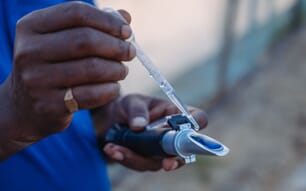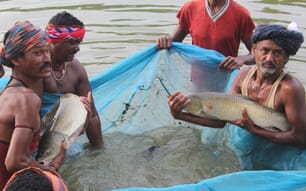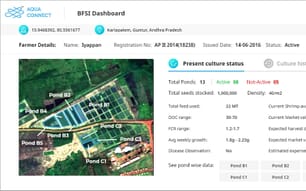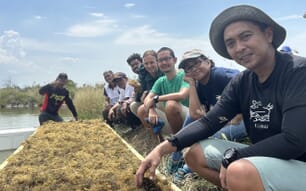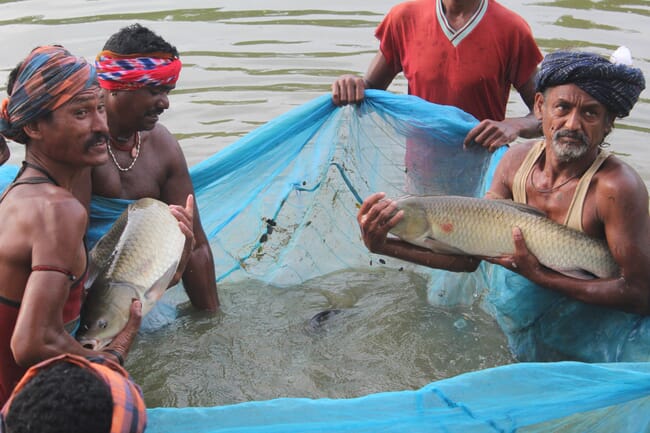
© KP Rath, Shutterstock
In the last few articles, we have discussed how a lack of production efficiency and transparency are the biggest challenges facing the Indian aquaculture sector. A major reason for this is the prevalence of traditional farming practices and the lack of awareness of technology.
On the production front, tech can address prevailing challenges like overfeeding, water quality parameters and disease detection. Implementation of tech-driven tools can help farmers improve their problem sensing capabilities – especially real-time analytics that can identify production issues in advance and aid the farmers in taking countermeasures. More often than not, farmers end up overfeeding or underfeeding due to improper feed management, which adds to the production cost and reduces their profit margins, whereas auto-feeders can optimise feed usage and help farmers regulate daily feeding.
On a similar note, IoT can help farmers closely monitor critical water quality parameters and take corrective actions. The advance of tech-driven solutions, powered by the data collected and AI, could be a game changer in predicting production problems and identifying countermeasures. Implementing such solutions for 5 million farmers, however, poses big hurdles.
Lack of awareness hinders the adoption of technology on the farm
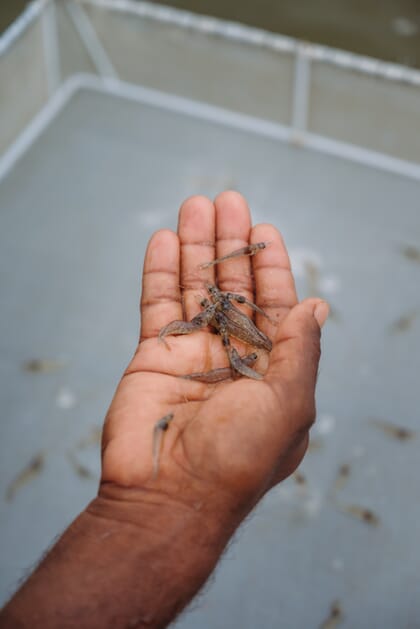
Many of India's shrimp farmers are unaware of scientific farming practices © Aquaconnect
As I stated earlier, awareness of innovations is very low among India’s aqua farmers. There is a huge gap between the market and the farmers in accessing new products and understanding how these could change their day-to-day activities. Consider this: Palani Muthu, an aquaculture farmer from Sirkazhi in Tamil Nadu, has been farming shrimp for the last 17 years. It is the primary source of income for his family. However, he found it hard to address the problem of overfeeding and poor survival rates. Like Palani, numerous aqua farmers in India are unable to resolve issues owing to a lack of awareness about scientific farming practices.
Many also face the stress of finding a buyer for their produce. Farmers often end up visiting several agents to find a suitable buyer and then have to wait 25 to 30 days for payments to be credited. The primary step to address such challenges is enabling and simplifying access to packages of practices, wherein farmers are guided throughout the culture cycle to adopt best management practices (BMPs). Adopting BMPs will accelerate the transition from traditional farming practices to smart and sustainable aquaculture.
Extending last-mile support and cost-effective technology tools to small or medium farms
Many tech companies in aquaculture sell products without guiding the farmers through their benefits or implementation. This often results in a knowledge gap between farmers and the technology, resulting in low acceptance rates. Developing a true scope for prosperity requires delivering the product or technology with guidance. A touch base for the farmer – like a kiosk or an outlet – can serve as an educational and orientational avenue.
Awareness of the products needs to be instilled by the tech providers as well. Simply buying an isolated technology or product will not be successful if the farmer is not apprised of its applications and benefits. This last-mile support can also be delivered in terms of equipping farms with IoT, but companies also need to take into account the affordability: implementing the latest technology on a large scale is cost-effective, but it is usually not an affordable option for small and medium-sized farms.
For instance, if a farmer wants to take a water quality test, they can approach a nearby laboratory every week and get a report for Rs 150 to Rs 200. Considering that a farmer takes 20 tests in a culture cycle for four months, it will cost a total of Rs 4,000 per culture, which is way less than an investment of Rs. 1 lakh per pond towards deploying IoT and related software.
Today, around 90 percent of India’s aquaculture farmers are either small or medium-scale producers who own farms of three to five acres. Currently, most tech solutions are not tailor-made for these farmers and do not match their profit levels. The beneficiaries of smart tech are often large businesses or farm holders with larger parcels of land. To truly double farmer incomes, we need the fruits of tech to reach and benefit every farmer: big or small.
Incentivisation is key to accelerating implementation of technology
Innovations often fail to reach farmers due to a lack of support and incentives from the regulatory bodies. Support from the government in the form of subsidies and financial assistance can go a long way. For instance, the Government of India offers subsidies to the tune of Rs 1 lakh to buy a tractor, and a 30 percent to 50 percent subsidy is offered when purchasing other farm equipment. If such incentives are extended to aqua farmers as well, they will be encouraged to experience the benefits of tech first-hand, thereby encouraging more and more farmers to follow suit.
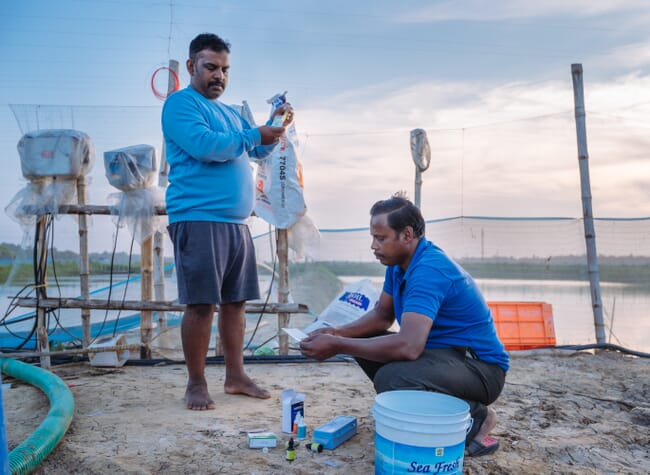
Innovations often fail to reach farmers due to a lack of support and incentives from the regulatory bodies © Aquaconnect
Moreover, modern farming solutions need to be promoted aggressively to demonstrate their impact. This, however, solves only part of the equation, while value chain transparency poses another huge challenge. If we closely observe the Indian aquaculture landscape, we can identify that extensive efforts are required at a foundational level. Sourcing intelligence through non-intrusive ways (eg leveraging remote sensing satellites) is one way to bridge the gap. The advantages of such a methodology are varied – from bringing transparency to the value chain to helping stakeholders such as farm input producers assess the demand and supply. In the post-harvest value chain, this helps identify production volumes in the months ahead.
Technology can build credit-worthiness
There is a need to create a system of formal credit that can be accessed more easily by farmers. And formal credit infusion in aquaculture can become mainstream when the other part of the equation is well balanced – the risk and therefore insurance. Lack of insurance is a major concern that prevents the banks from extending credit to aquaculture farmers. Unlike their agricultural counterparts, aquaculture farmers are not offered any subsidies on insurance premiums, which further demotivates them from risk mitigation as it significantly adds to their production costs. If the government reduced the premiums on insurance, aquaculture farmers could mitigate production risks. This would also account for an increase in their working capital limit, thereby helping meet their farming expenses.
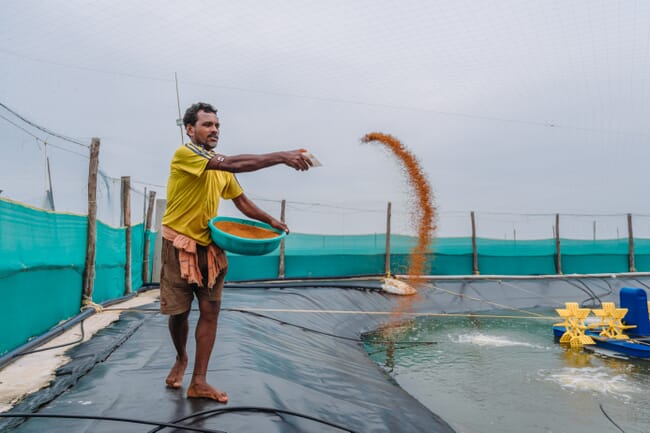
The shrimp sector needs improved guidance from aquatech companies, affordable prices and government support through subsidies © Aquaconnect
Summing up
To propel the Blue Revolution 2.0, farmers need digital solutions from pre-production to post-harvest. This will increase productivity, efficiency and traceability. For farmers to adopt modern technology like IoT devices, AI automation tools and a data-driven farming approach, improved guidance, affordable prices and subsidies are needed. The business style and psyche of Indian aquaculture farmers need to be understood to offer them better technological and financial solutions.


